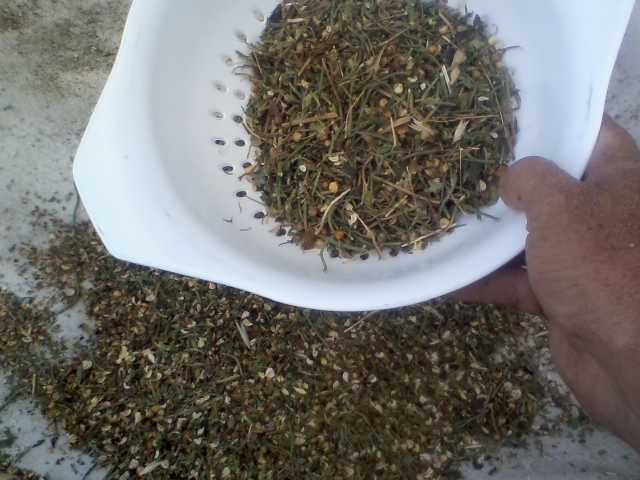
 12
12




You are welcome to check out my blog at http://www.theartisthomestead.com or my artwork at http://www.davidhuang.org
 5
5




 6
6




You are welcome to check out my blog at http://www.theartisthomestead.com or my artwork at http://www.davidhuang.org
 5
5




Reminiscing Remnant
 6
6




 3
3




You are welcome to check out my blog at http://www.theartisthomestead.com or my artwork at http://www.davidhuang.org
 2
2




Reminiscing Remnant
 2
2




The soil need not be perfectly prepared: this is wild seed that competes in hayfields with perennial grasses.
You are welcome to check out my blog at http://www.theartisthomestead.com or my artwork at http://www.davidhuang.org
 2
2




Reminiscing Remnant
 3
3




Invasive plants are Earth's way of insisting we notice her medicines. Stephen Herrod Buhner
Everyone learns what works by learning what doesn't work. Stephen Herrod Buhner
 2
2




You are welcome to check out my blog at http://www.theartisthomestead.com or my artwork at http://www.davidhuang.org
 2
2





 2
2





 3
3




David Huang wrote:I hadn't heard of sprouting pinto beans. Good to know those would still need to be cooked.
 2
2




Kate McKae wrote:I’ve sprouted caragana. It grows as a windbreak here on the prairies and I cook with the seeds. The seed portion is still hard when sprouted- is a mung bean the same?
 3
3




 2
2




Check out Redhawk's soil series: https://permies.com/wiki/redhawk-soil
 1
1




Being weird is easy. Making it mainstream is hard. Be brave! https://www.youtube.com/@healthygreenbrave
 7
7




Rebekah Harmon wrote:What do y'all mean when you say thresh? My mustard and kale plants produced enormous amounts of seed pods. How do you pop them open? I've been twisting them in my fingers, which is kinda a pain.
 2
2




Kim Huse wrote:
David Huang wrote:I was recently listening to a presentation by Doug Evans about his newly published book, "The Sprout Book".
Imma gonna look into this; need alternatives in my and hubbies diet; where did you get the sprouting rack at?
You are welcome to check out my blog at http://www.theartisthomestead.com or my artwork at http://www.davidhuang.org




David Huang wrote:
Kim Huse wrote:
David Huang wrote:I was recently listening to a presentation by Doug Evans about his newly published book, "The Sprout Book".
Imma gonna look into this; need alternatives in my and hubbies diet; where did you get the sprouting rack at?
I actually made that sprouting rack from some grid beam parts I had leftover another project. I understand a lot of people find certain types of dish drying racks work good for sprouting jars.
 3
3




Still slingin’ Avacado pits




leigh gates wrote:Plantain, the narrow leaf native “weed”. Gave full half cup+ from approximately 1’ x 5’ “hell strip” in a parking lot. Really a lot more, the measuring was just curiosity. I had not yet read that they were edible. Anyone else have experience?
 3
3




I'm only 65! That's not to old to learn to be a permie, right?
 3
3




 2
2




Check out Redhawk's soil series: https://permies.com/wiki/redhawk-soil
 2
2








Invasive plants are Earth's way of insisting we notice her medicines. Stephen Herrod Buhner
Everyone learns what works by learning what doesn't work. Stephen Herrod Buhner
 2
2




 1
1




Daniel Sillito wrote:A favourite vegetable of mine for this purpose is Rattail radishes. They are bred to produce huge amounts of seedpods (the roots are small and tough). The greens are good in the spring, the fresh pods are good all summer for soups and stir-fries and salads, toward the end of the season I like to lacto ferment some pods as a pickle, and then leave the rest to dry for sprouting in the winter. The pods are a bit fiddly, but the rattail variety has far more seeds per pod than the average radish so its much easier to shell than other radish varieties.
You are welcome to check out my blog at http://www.theartisthomestead.com or my artwork at http://www.davidhuang.org
 2
2





|
This tiny ad is programmed to love you
The new purple deck of permaculture playing cards
https://www.kickstarter.com/projects/paulwheaton/garden-cards
|



